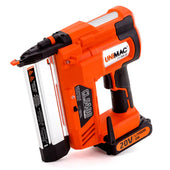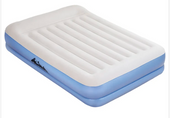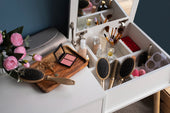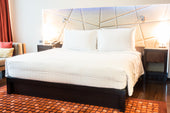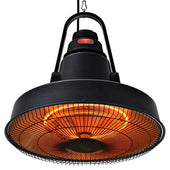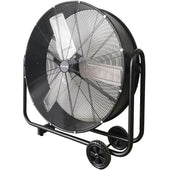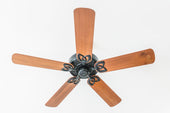Introduction to Antique Sideboards Restoration
Restoring an antique sideboard is a meticulous process that combines craftsmanship, historical awareness and artistic sensibility. These timeless pieces, often adorned with intricate designs and unique character, require special care to preserve their integrity and charm. Understanding the history and materials used in the sideboard is essential before tackling any restoration work.
A properly restored sideboard not only enhances its beauty but also maintains its value, making it a rewarding endeavour for collectors and enthusiasts. Key steps include assessing damage, cleaning appropriately, and selecting suitable restoration techniques. Careful planning ensures the final result respects the piece's original craftsmanship while rejuvenating its functionality and aesthetic appeal.
Why Restore Instead of Replace?
Restoring antique sideboards allows one to preserve the craftsmanship and historical significance embedded within each piece. Many antique sideboards are constructed using materials and techniques that are no longer prevalent, offering unmatched durability and elegance. At During Days, Restoration not only maintains these unique features but also reduces waste by preventing the disposal of a potentially valuable item.
Unlike modern furniture, which is often mass-produced, antiques have distinct character and individuality, making them irreplaceable in both design and sentiment. Additionally, restoration can often be more cost-effective than purchasing a new, high-quality piece. This alternative supports sustainability while retaining the charm of bygone eras.
Understanding the History and Design of Antique Sideboards
Antique sideboards date back to the 17th century, originally designed as functional furniture pieces for dining rooms. They were used to store tableware, linens, and serving dishes, reflecting the culinary customs of their era. Over time, they evolved from simple, sturdy designs to highly decorative masterpieces during the Victorian and Edwardian periods.
Key materials include solid woods such as oak, mahogany, and walnut, often adorned with intricate carvings, marquetry, or veneer. Styles varied geographically, with French sideboards showcasing ornate Rococo designs, while English versions often embraced Georgian or Regency elegance.
Understanding these historical aspects provides insight into their craftsmanship, guiding restoration.
Essential Tools and Materials for Restoration
Restoring an antique sideboard requires a precise selection of tools and materials to ensure both efficiency and preservation of the furniture's unique character.
Tools Needed:
- Sandpaper and Sanding Blocks: For smoothing surfaces and removing old finishes.
- Paint Stripper: Helps to remove stubborn stains or layers of paint.
- Scrapers: Metal and plastic options for intricate detailing.
- Paintbrushes: Essential for applying finishes evenly.
- Clamps: To stabilise broken parts during repair.
- Screwdrivers and Mallets: For fixing loose or damaged joints.
Materials Needed:
- Wood Filler: Useful for filling cracks and gaps.
- Stain and Varnish: To rejuvenate the surface’s natural colour.
- Protective Gear: Gloves, goggles, and masks for safety.
- Cleaning Solutions: For removing dust, mould, or grease.
Proper preparation creates a smoother restoration process. Ensure tools are in good condition.
Evaluating the Condition of an Antique Sideboard
Determining the state of an antique sideboard involves a detailed assessment to identify areas needing attention. Begin by inspecting the structure, focusing on signs of damage such as warped wood, cracks, or loose joints. Scrutinise the finish for scratches, stains, or peeling varnish. Examine hardware elements including hinges, knobs, and locks, ensuring they function properly or identifying replacements if required. Check for woodworm infestations or any presence of rot, especially in hidden areas like the back panel or underside. Observe any previous restoration work which might affect authenticity. A thorough evaluation guides the restoration process in maintaining its historical integrity.
Step-by-Step Guide to Cleaning and Stripping Old Finishes
- Prepare the Workspace Choose a well-ventilated area and cover the floor with a drop cloth to protect it. Wear gloves, goggles, and a mask for safety.
- Dust and Clean Wipe the sideboard with a soft cloth to remove surface dust. Use a gentle wood cleaner and a sponge to clean off grime without damaging the wood.
- Test the Finish Perform a patch test to determine if a chemical stripper or sanding is required. Apply a small amount of stripper to an inconspicuous area and observe.
- Apply Chemical Stripper Use a brush to spread the stripper evenly, following the product's guidelines. Allow it to sit as instructed to loosen the finish.
- Scrape Off the Finish Use a plastic scraper or putty knife to carefully lift softened varnish or paint. Avoid gouging the wood’s surface.
- Remove Residue Wipe residue with fine steel wool dipped in mineral spirits or denatured alcohol. Work along the grain for better adherence to the natural lines.
- Sand Smoothly Sand the surface using fine-grit sandpaper to remove leftover finishes. Progressively use finer grades for a smooth, clean base.
- Clean Again Wipe the surface with a tack cloth to eliminate dust and particles. Ensure complete cleanliness before moving to refinishing steps.
Repairing Structural Damage and Fixing Loose Components
Addressing structural damage and securing loose components are crucial steps in restoring antique sideboards. Begin by inspecting the piece for cracks, splits, or visible damage to the framework. Use wood glue to bond minor separations, ensuring sufficient clamping pressure for a firm hold. For larger cracks, reinforce the repair with dowels or splines.
Loose joints often occur due to aged adhesives. Dismantle the joint, clean off old glue, and reassemble using a high-quality wood adhesive. Check for missing or damaged screws, replacing them as necessary with period-appropriate fittings. Tightening screws and bolts can stabilise wobbly legs or weak frames.
Techniques for Restoring Woodwork and Veneer
Restoring antique sideboards often requires specialised approaches to repair and revitalise woodwork and veneer. Begin by assessing the condition of the veneer; loose or chipped areas should be re-secured using wood glue. Apply clamps for even pressure, allowing the adhesive to cure fully.
For scratched or discoloured wood surfaces, sanding with fine-grit sandpaper restores smoothness. Use a sanding block to prevent uneven wear. Fill deep gouges with wood filler, matching the original colour, and sand after drying. Test stains on an inconspicuous area before application to ensure consistency.
Polishing with a soft cloth and an appropriate wood finish enhances the sideboard’s lustre, highlighting its natural beauty.
Finishing Touches: Painting, Staining, or Varnishing
Selecting the right finish for an antique sideboard is crucial to preserving its authentic charm. When painting, a high-quality primer ensures durability and prevents peeling. Opt for soft neutral colours or vintage-inspired tones to complement the piece’s period. For staining, sanding the surface evenly enhances absorption and creates a consistent, rich tone. Stains work particularly well for highlighting natural wood grain details. Varnishing, on the other hand, offers a protective coat that can be glossy, satin, or matte, depending on the desired effect. Between each layer, lightly sand with fine-grit sandpaper to achieve a smooth, professional finish.
Caring for Your Restored Antique Sideboard to Preserve Its Beauty
Proper care of a restored antique sideboard is essential to maintain its appearance and longevity.
- Dust Regularly: Use a soft, lint-free cloth to remove dust, avoiding scratches. Microfibre cloths work well for capturing fine particles.
- Avoid Direct Sunlight and Heat: Prolonged exposure to sunlight and heat sources can cause fading, warping, or cracking. Placement away from windows or radiators is recommended.
- Control Humidity: Fluctuating humidity levels can stress wood. A consistent indoor environment benefits the piece, and a dehumidifier or humidifier may help.
- Clean Spills Promptly: Dampen a cloth slightly to wipe spills immediately, using mild, non-abrasive cleaners if necessary.
- Apply Protective Finishes: Periodically treat the surface with beeswax or a high-quality furniture polish to enhance shine and shield the wood.
Consider professional maintenance if damage occurs or repairs are needed.
Common Mistakes to Avoid During Restoration
- Ignoring Proper Cleaning Neglecting to thoroughly clean the sideboard before restoration can trap dirt and grime under the finish, leading to a flawed result.
- Skipping Repairs Failing to fix structural issues, such as loose joints or missing veneer, compromises the piece’s integrity and diminishes its longevity.
- Using Inappropriate Tools Employing abrasive tools or coarse sandpaper can damage delicate wood surfaces and leave irreparable marks.
- Over-Applying New Finishes Applying excessive coats of paint, stain, or varnish may obscure intricate details and create an unnatural appearance.
- Lack of Research Without understanding the piece's history or materials, one might use products that aren’t compatible, potentially causing irreversible damage.
Display and Integration of Your Restored Sideboard into Modern Interiors
Restored antique sideboards can seamlessly enhance contemporary spaces while preserving their timeless charm. To integrate them effectively, homeowners may explore various placement options such as using the sideboard as a statement piece in an entryway or a functional storage unit in a dining room.
Suggestions for Placement:
- Living rooms: Pair the sideboard with modern sofas or rugs to balance old-world elegance with modern aesthetics.
- Bedrooms: Use it as a unique dresser or storage solution.
- Kitchens: Situate it as a chic pantry or coffee station for added versatility.
Decorative accents, including vases, framed art, or books, work well atop the sideboard, complementing the overall interior design.
Conclusion: Breathing New Life into Timeless Treasures
Restoring antique sideboards allows enthusiasts to preserve the artistry and craftsmanship of a bygone era while creating functional and stunning heirloom pieces. By carefully assessing damage, selecting appropriate tools and materials, and utilising proper restoration techniques, one can rejuvenate these timeless treasures.
Attention to detail ensures that each step—from stripping old finishes to applying protective coatings—honours the original integrity of the sideboard. Additionally, incorporating period-specific embellishments helps retain its historic charm. With patience and thoughtful effort, antique sideboards can be transformed into breathtaking centrepieces that continue to captivate for generations to come.







